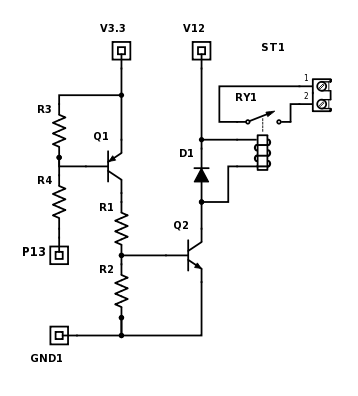I tend to use transistors because they were the cheapest switches for ages.

R3 is optional as long as the internal pull up resistor is enabled at reset.
Explore... Chat... Share...

martinayotte wrote:Why not relying on the fact that PullUp can secure the OFF state instead and bringing GPIO to LOW to turn ON the relay ?
rudy wrote:That is perfectly acceptable as well. The point is to have two inverter stages. So that a high state (reset state) is also the off state for the relay.
I tend to use transistors because they were the cheapest switches for ages.
R3 is optional as long as the internal pull up resistor is enabled at reset.
It takes about 20-25 seconds for home assistant c[…]
I tried to upgrade tof my sonoff basic R2 with the[…]
a problem Perhaps you want to define "Probl[…]
Rebooting your router will not give you a faster I[…]
There are no other notifications from esptool.py i[…]
Using the Arduino IDE, you'll learn how to set up […]
In this project, you will post to Twitter using an[…]
In this project, we will build a water level contr[…]
I guess I'm late, but I had the same problem and f[…]
Last night I received my first D1 Minis for a lear[…]
Although I am aware that this is an old post, I fe[…]